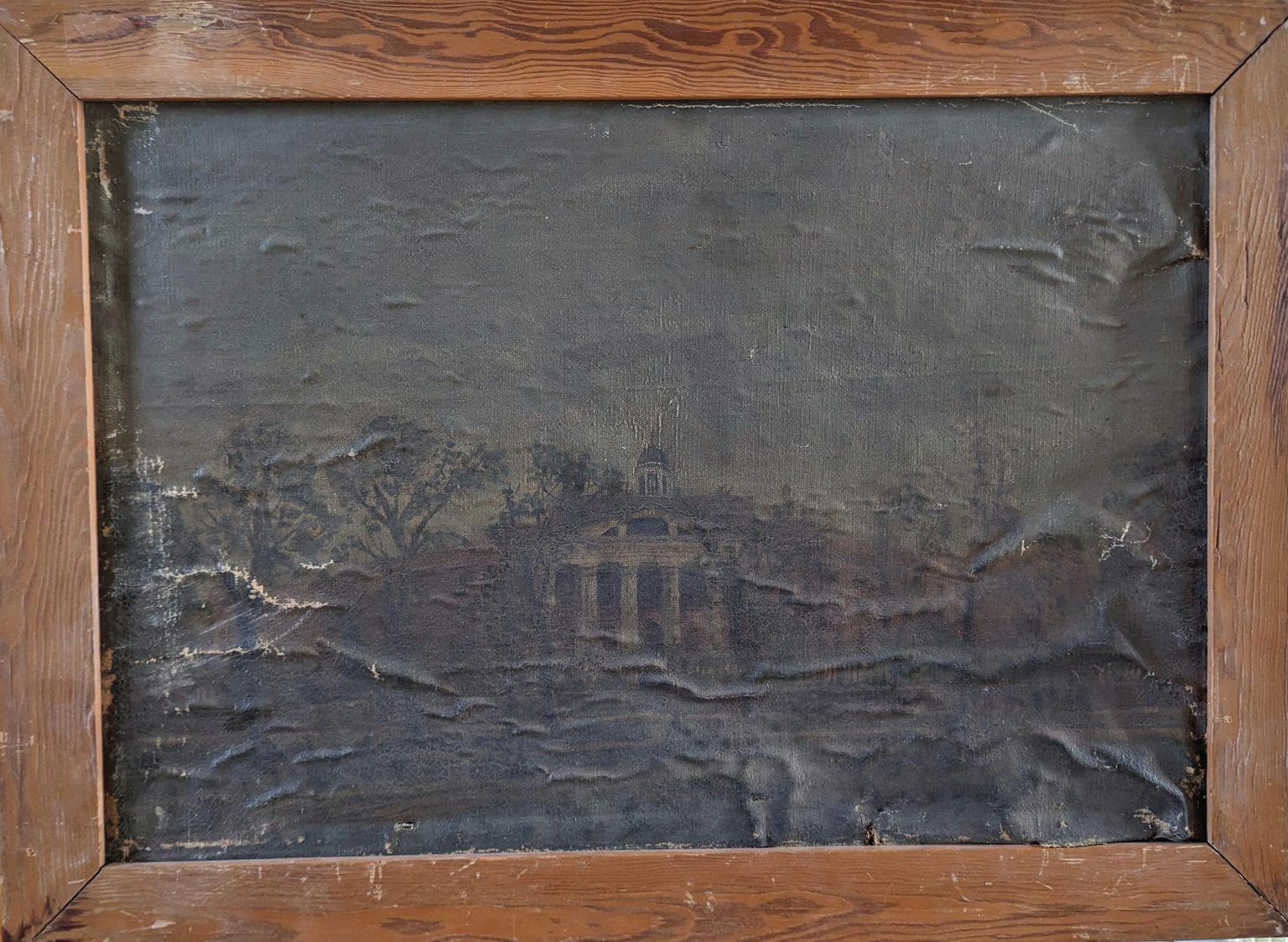Historically Speaking





As we embark on a new year together, Historic Columbia continues to take its next steps into a new chapter for our beloved organization. It has been an honor to meet so many of the valued members and partners who share our vision in connecting places and stories with our community and those who visit our beautiful state. These conversations have inspired me and our staff and will continue to inform our strategic direction as we begin the process of setting our next three-year strategic plan.
Integral to our growth and success, Historic Columbia’s past strategic plans led us to accomplish major achievements in the museum and preservation field, such as reopening the Woodrow Wilson Family Home as the Museum of the Reconstruction Era and publishing an economic impact study, “Catalyst for Columbia: The Impacts of Historic Preservation in Columbia, South Carolina.” But it is equally important to note the subtle shifts and deliberate actions that a strategic plan empowers an organization to make as we outline our long-term vision. Over the next few months, the board and staff will develop the roadmap to the goals and objectives for our next three years, and we look forward to sharing the exciting new beginnings and our continued commitment to shaping the future of our community.
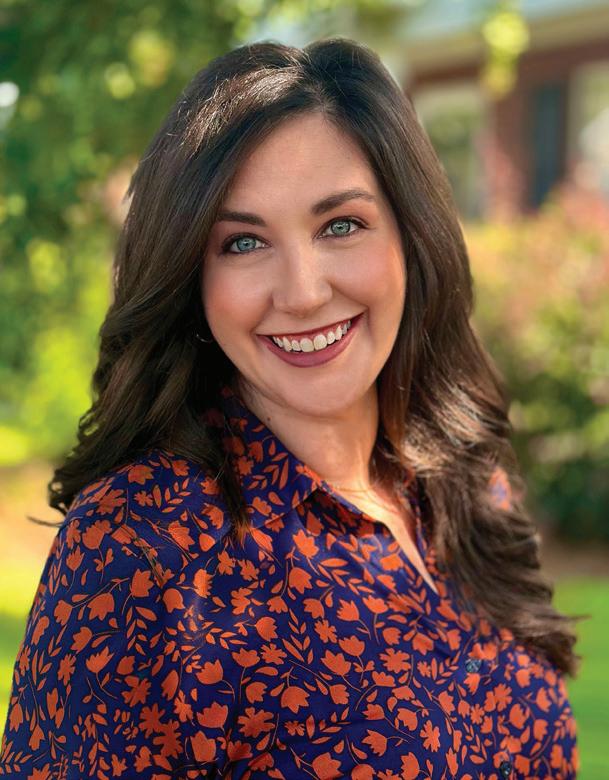
Columbia preserves places and shares complex stories from the past that connect us in the present and inspire our future.
In the spirit of new beginnings, we are excited to debut the reinterpretation of the Robert Mills Warming Kitchen, Heat & Hardship: The Hidden Labor of Enslaved Cooks. This installation of hands-on activities reimagines the experience with one of the most popular spaces in the Robert Mills House, bringing the personas of three individuals to life. As Historic Columbia looks to continually evaluate and improve our visitors’ experience, I invite you to utilize your member benefits and join us for a tour of the Robert Mills House this spring!
Your participation and support are intrinsic to this organization’s legacy. As our story together unfolds, I welcome your engagement in Historic Columbia’s unwavering commitment to preserve, educate, and inspire.
With gratitude,


Please join us in welcoming these folks to the Historic Columbia team!
(Pictured left to right)
Development Coordinator
Katherine Crawford
Rentals Coordinator
Carl Cox
Rentals Office Assistant
Scotty Faltynski
Visitor Engagement Associate
Li Hubbard
Photo of the Trustees’ Award for Organizational Excellence from the National Trust for Historic Preservation (NTHP). This award was presented to Historic Columbia at NTHP’s PastForward Conference in New Orleans on Monday, October 28, 2024. Image courtesy Historic Columbia archives
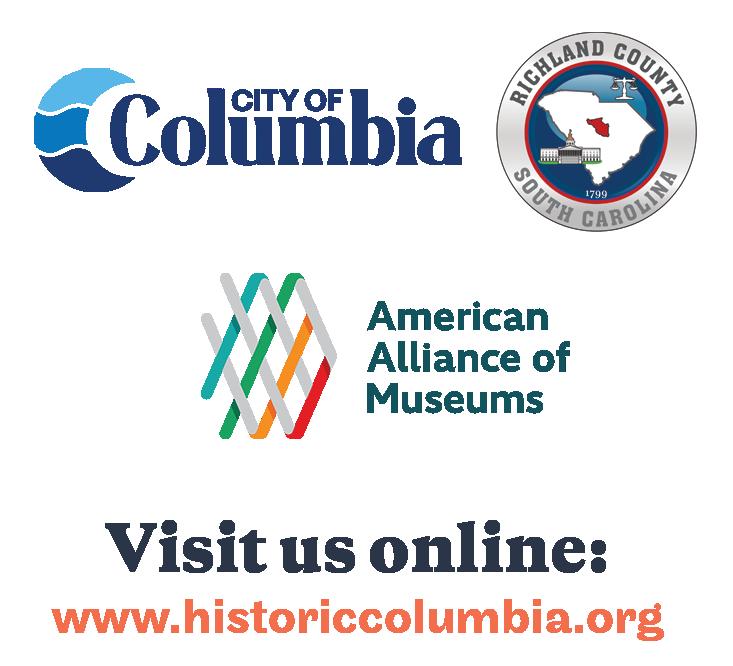



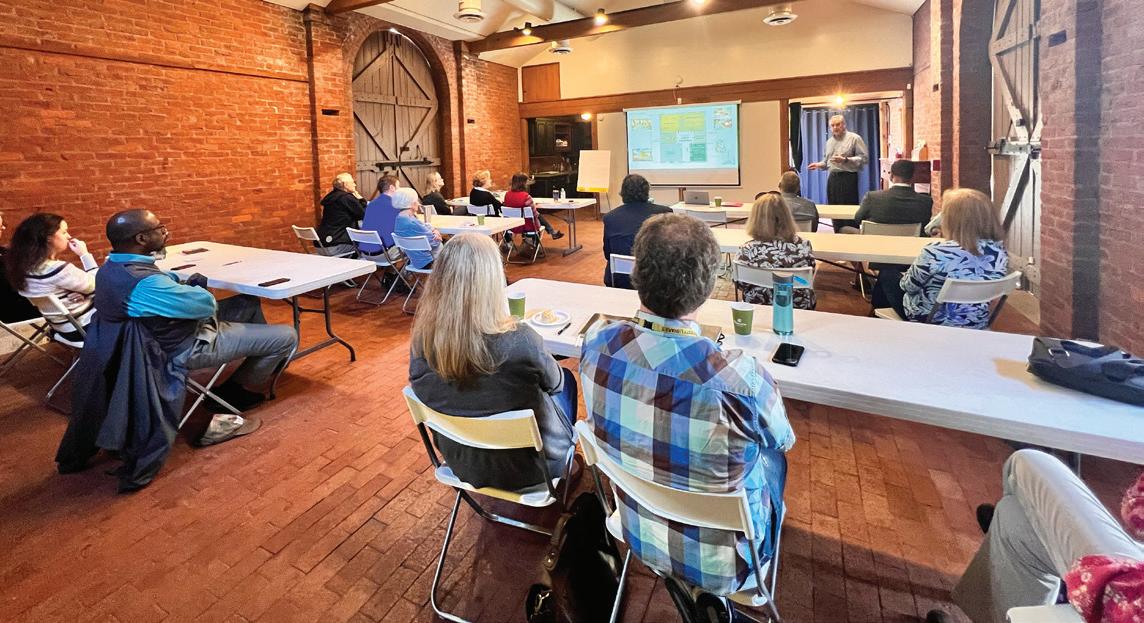
Stakeholders listening and voicing their opinions during a session regarding the reinterpretation of the Robert Mills House museum in February 2023. Image courtesy Historic Columbia archives
istoric Columbia is planning for the future, and we want to hear from you! As we begin developing our FY2026-2028 Strategic Plan, we are committed to engaging with the community we serve. To ensure your voice is included, we are launching a public survey this month to gather valuable feedback and ideas from individuals, organizations, and businesses across the Midlands. This survey is an opportunity to share your thoughts on how Historic Columbia can better fulfill its mission of preserving, promoting, and protecting the region’s history. Your insights will help shape priorities in areas such as:
COMMUNITY ENGAGEMENT: How can we ensure our programs and resources are accessible and meaningful to everyone?
HISTORIC PRESERVATION: What kind of advocacy and tools would help Historic Columbia preserve the places, stories, and memories that are important to the City of Columbia and Richland County?
EDUCATION & PROGRAMMING: What types of events, tours, or educational initiatives would you like to see offered?
SUSTAINABILITY & GROWTH: How can Historic Columbia continue to thrive and adapt to the changing needs of our community?
On Thursday, May 15, 2025, Historic Columbia will celebrate Preservation Month by recognizing local projects, individuals, and groups whose excellence in the field of historic preservation has maintained or added to the historical, architectural, and cultural heritage of Columbia and Richland County. Categories for recognition include:
Preservation, Rehabilitation, or Restoration (commercial, institutional, rental, or municipal)
Recognizes commercial, institutional, rental, or municipal projects that follow the National Park Service’s definitions of preservation, rehabilitation, or restoration.
Preservation, Rehabilitation, or Restoration (residential/single family)
Recognizes projects that follow the same, previously listed definitions, but applied to single-family homes.
Revitalization (any ownership or use)
Recognizes a project or work that makes a special contribution to the community and/or a pioneering investment in historic districts in need of revitalization.
Preservation Leadership
Recognizes an individual, corporation, governmental agency, community, or neighborhood association that has significantly contributed to the advancement of historic preservation in the community.
Nominations for projects are limited to those completed within the past five years and located in Columbia and Richland County. Leadership awards have no time limit. Nominations must be received by February 28, 2025. Winners will be notified in early April. To submit a nomination, visit:




historiccolumbia.org/preservation-awards
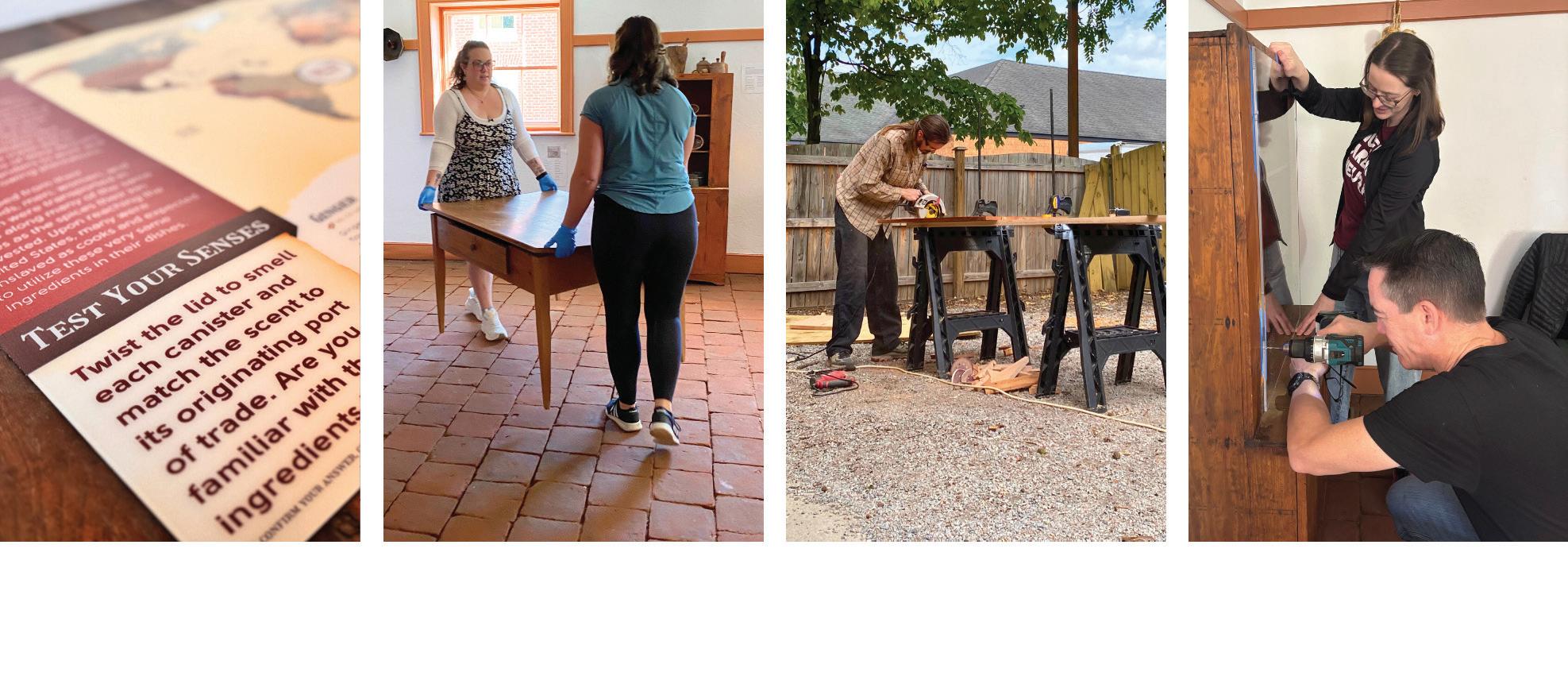

By KATHARINE ALLEN Director of Outreach & Engagement
Fire crackling, smoke billowing, sweat dripping, muscles tensing—these were the sounds, smells, sights, and feelings associated with an antebellum warming kitchen.
Over the last decade, Historic Columbia (HC) staff,
If a site’s historic uses are key to its interpretation, how then might HC reimagine the Robert Mills House, which was designed by Mills as a private residence for Ainsley and Sarah Hall but never occupied as such? As part of its FY20232025 Strategic Plan, Historic Columbia
functions. These rooms will represent its earliest days in which Ainsley and Sarah Hall and the people they enslaved would have occupied this property, its actual use as the site of religious institutions with varying missions and needs, and finally its transformation into Columbia’s premier

CURATORIAL
Rebecca Woodruff, project lead
Katharine Allen
Rachel Gregor
Rachel Ward
IN-HOUSE FABRICATION
Kevin Jennings
John Sherrer
GRAPHICS
Emily Brown
ANIMATIONS
Furman Fortner
ACTORS
David Alexander: Joe & Peter
Aaliyah Broadwater: Charlotte
Jessica Crowe: Sarah Hall
Sam Moore: Henry
Carly Siegel: Nancy & Lydia
Katie Slack: Matilda
VOICE ACTORS
Em Eldridge: Sarah Hall
Jay Hazen: Robert Mills
Ebony McKinley: Enslaved Cook
John Sherrer: Storeroom Narrator
SCHOLAR REVIEW & ADVISEMENT
Jill Found, PhD
Nicole Maskiell, PhD
Rabbi Meir Muller, PhD
Mark Smith, PhD
With funding from South Carolina Humanities, Historic Columbia is proud to announce the opening of Heat & Hardship: The Hidden Labor of Enslaved Cooks, which will serve as our “test case” for this interpretive plan. This exhibit reimagines one of the Robert Mills House’s most popular spaces, the warming kitchen, through the installation of hands-on activities that incorporate touch and smell. Rather than solely interacting with wall panels, visitors will listen to first-person perspectives, made available with the Dutch technology Guide-ID, that contextualize the experiences of three individuals associated with the site in 1823. Hear Robert Mills explain his views on design and slavery, Sarah Hall fret with paranoia about how her food is prepared, and an enslaved cook describe her longing for separated family as she memorizes yet another recipe.
Historic Columbia invites our members to take advantage of their free house tour benefit by booking a visit to the Robert Mills House in the coming months. The new experience begins with a traditional, guided tour of the primary and upper floors. Visitors are then invited to the basement floor, where they can take a seat at a kitchen worktable and explore interactives, such as identifying spices by smell and learning about the human cost of bringing these ingredients to Columbia in 1823. This experience is anchored by our new Guide-ID audio wands, which ensure the museum remains a phonefree (and distraction-free) space.
Historic Columbia staff values the input of its members, and we hope that you join us this spring at the Robert Mills House. By taking the tour and our fiveminute survey, you are playing a vital role in the next phase of this National Historic Landmark site.

To inform the storytelling found at each audio stop, Historic Columbia Curator Rebecca Woodruff pulled inspiration from numerous primary sources. Records indicate that Ainsley Hall willed seven enslaved men and women—Charlotte, Henry, Joe, Lydia, Matilda, Nancy, and Peter—to his wife, Sarah. While their names survive, their thoughts, duties, and futures are lost to the historical record.
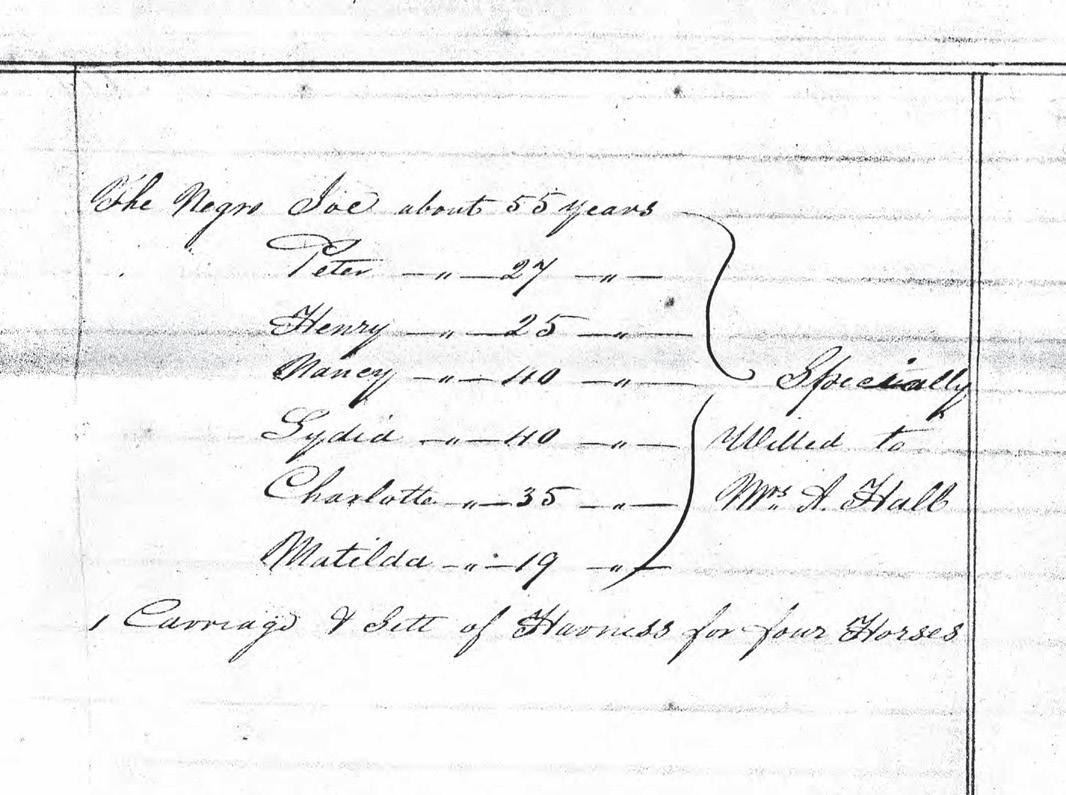
To accommodate the longer tour experience at the Robert Mills House, our museum tour times have changed:
WEDNESDAY-SATURDAY
10:30 p.m.
12:00 p.m.
1:30 p.m.
3:00 p.m.
SUNDAY
1:30 p.m.
1:30 p.m.
3:00 p.m.
3:00 p.m.
Hampton-Preston Mansion
Robert Mills House* Museum of the Reconstruction Era Journey to Freedom: Mann-Simons Site and Modjeska Monteith Simkins House
Robert Mills House* Museum of the Reconstruction Era Hampton-Preston Mansion Journey to Freedom: Mann-Simons Site and Modjeska Monteith Simkins House
*new tour experience
Tickets are available online and in The Gift Shop at Robert Mills.
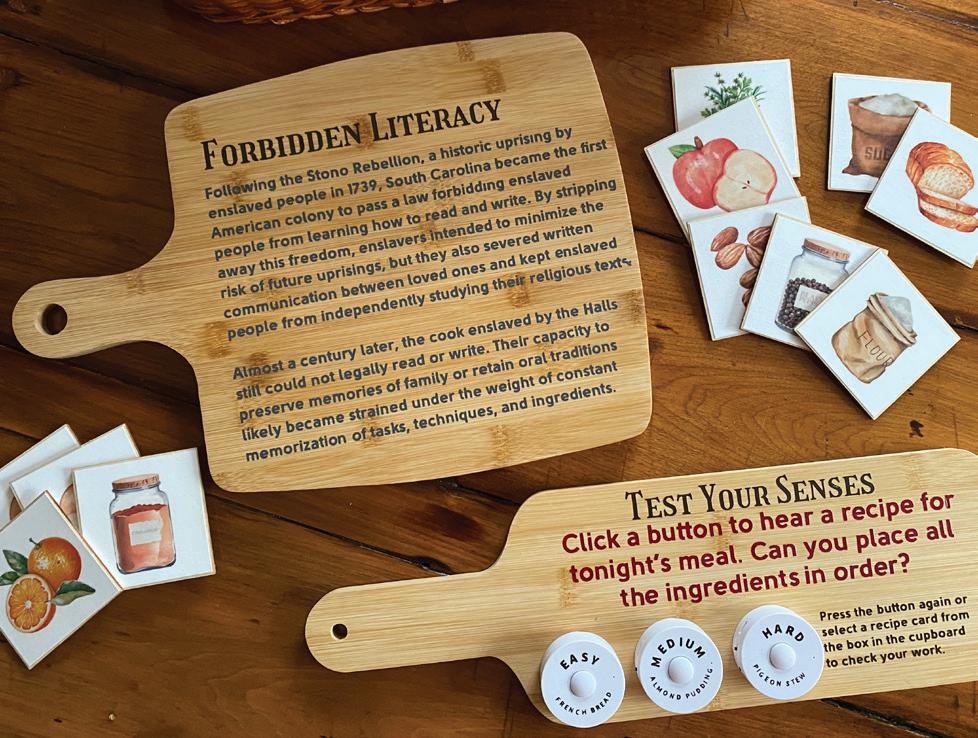
Staff identified creative solutions for the room’s hands-on activities, such as cutting boards and mats, to keep visitors as immersed in the setting as possible.

This installation is supported by South Carolina Humanities, a not-for-profit organization; inspiring, engaging and enriching South Carolinians with programs on literature, history, culture and heritage. SC Humanities receives funding from the National Endowment for the Humanities: Democracy demands wisdom.
By JOHN SHERRER Director of Preservation
On Monday, October 28, 2024, the National Trust for Historic Preservation thrust Historic Columbia into a brilliant spotlight amid other notable award recipients gathered in New Orleans for the annual PastForward Conference. The highly anticipated ceremony set the tone for three days of connection, programming, tours, and learning, during which attendees from across the United States and its territories bonded over preserving the places, stories, and resources that define our varied communities. Decades of growth, enhanced professionalism, and ever-expanded relevancy to broad audiences earned Historic Columbia the coveted Trustees’ Award for Organizational Excellence, which recognized over twenty years of institutional preservation-related efforts with highlights including historic site stewardship, collections care, community histories, and inclusive research and programming. This prestigious award marks Historic Columbia’s evolution from a once narrowly focused preservation organization into a leader in preserving both the built environment and the memories of people and places often overlooked in history.
A video presentation at the awards ceremony highlighted the properties under Historic Columbia’s stewardship, with a special focus on efforts at the Hampton-Preston Mansion & Gardens (ca. 1818), the Museum of the Reconstruction Era at the Woodrow Wilson Family Home (ca. 1871), the Mann-Simons Site (ca. 1883), and Modjeska Monteith Simkins House (ca. 1895). These properties have undergone significant capital projects, resulting in enhanced preservation, physical improvements, and enriched interpretations of the past.
Scan now to watch the video shared with attendees!
Historic Columbia Director of Preservation John Sherrer accepts the Trustees’ Award for Organizational Excellence from the National Trust for Historic Preservation at the PastForward Conference on Monday, October 28, 2024. Image courtesy National Trust for Historic Preservation



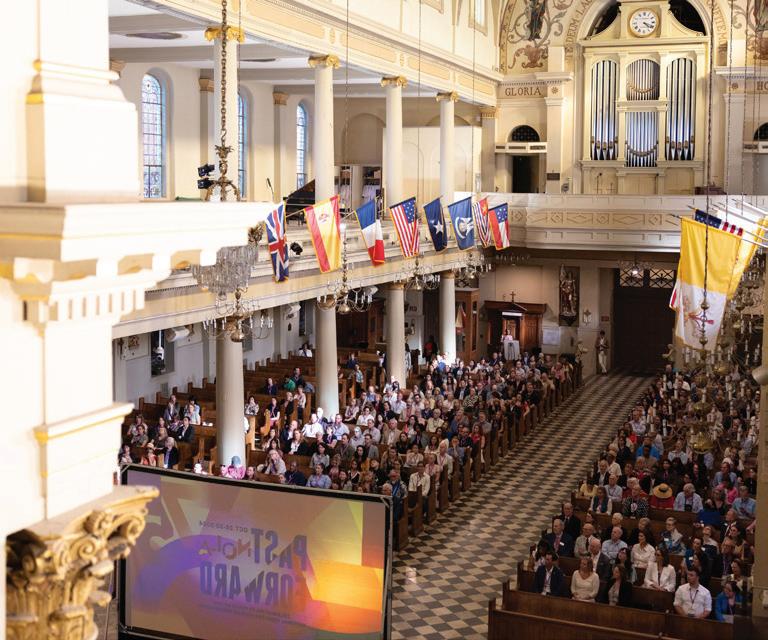
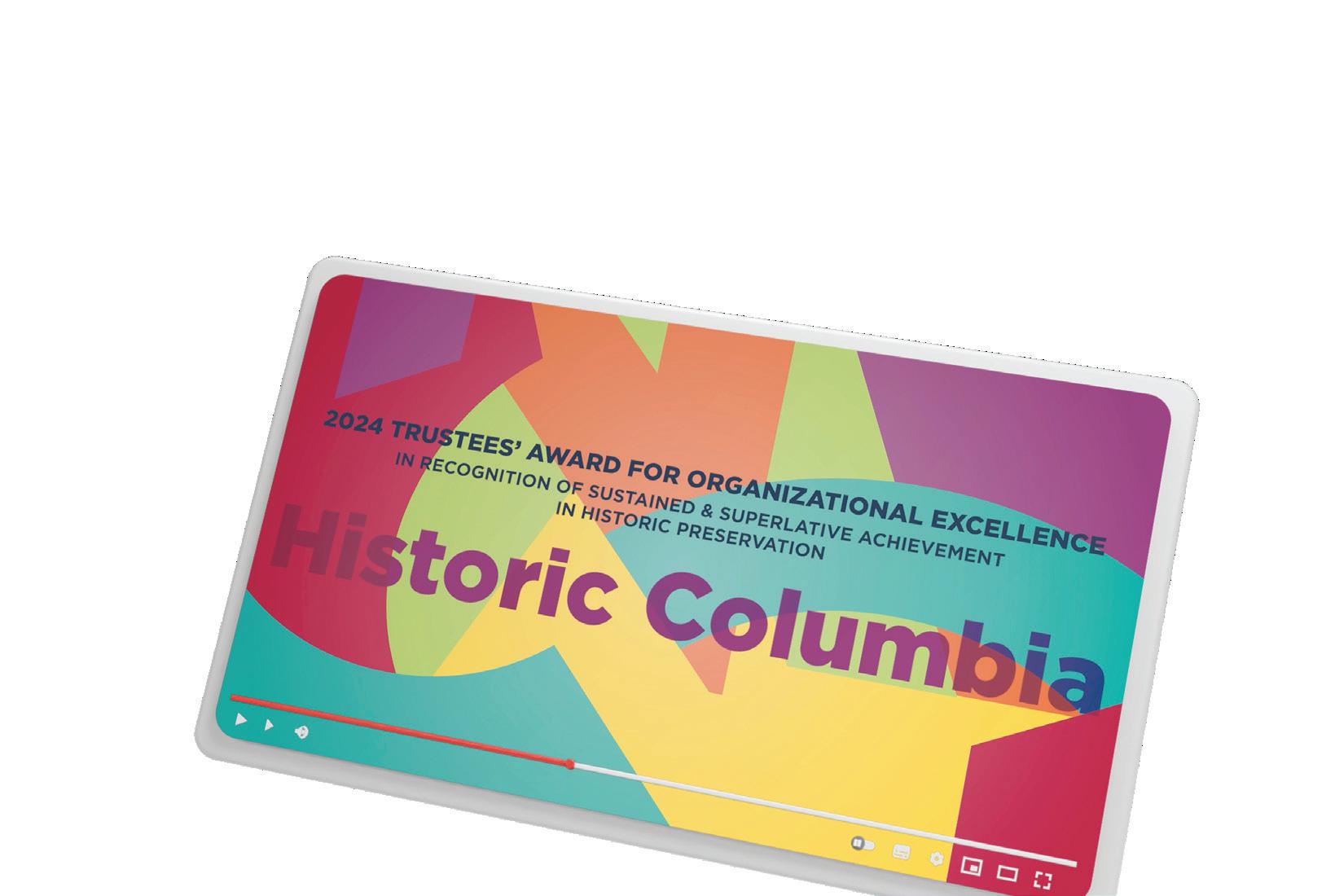
Image
Conference attendees gather within the stunning ca.-1789 Saint Louis Cathedral for PastForward’s plenary session.
Image courtesy National Trust for Historic Preservation


By KATHARINE ALLEN Director of Outreach & Engagement
his fiscal year, Historic Columbia is partnering with the Mill District Alliance on a project to document more than 100 years of life for the workers at the four Pacific Mills—Richland, Granby, Olympia, and Capital City. Phase I of this project, funded by the Richland County Conservation Commission, includes a 10-stop mobile tour with wayside signage that will explore architecture, education and religious institutions, labor organizing and unionization, segregation, and daily life for the thousands who lived in the city’s mill villages.
The photograph below of workers in Olympia’s Cloth Room was likely taken for The Spinner, a monthly newsletter published “of the people, for the people, by the people of the Pacific Mills community.” The Cloth Room’s monthly reporter, Ethel Padgett (1904-1987), was the daughter of mill operatives who moved to Columbia for employment about 1907. Padgett worked at Olympia Mill until her marriage to William T. Beckham (1896-1989) in 1923.
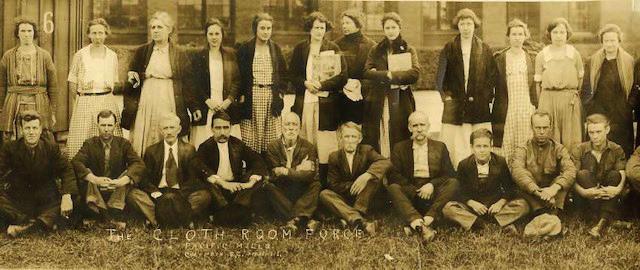
April 7 Palladium Tour: A Century of
1:00 — 6:00 p.m. | Forest Hills Neighborhood
Join us to explore a curated group of homes that showcase varied styles of architecture while learning about the history of Forest Hills and the people who have called it home. This is a self-guided, self-paced walking tour, which will conclude with a block party with food, drinks, live music, and the southern hospitality that defines much of our community.
April 10-12
Hours vary | Hampton-Preston Gardens
Celebrate spring at our Plant Sale! Browse heirloom flowers, shrubs, vegetables, and perennials, all grown in Historic Columbia’s gardens. All selections are integral to the stories we share and many are rare or hardto-find. Our horticulture experts will be onsite with tips and recommendations. Don’t miss this opportunity to refresh your garden and connect with fellow green thumbs.
May 8

“The Cloth Room Force,” Pacific Mills, November 25, 1922. Historic Columbia collection HCF2010.2.2
Historic Columbia is actively seeking photographs and other ephemera to include in this project. If you are interested in sharing information, or donating photographs or physical objects, please reach out to our research team at the link or QR code below.
Learn more about this project and how to collaborate with Historic Columbia:


5:00 — 7:00 p.m. | HamptonPreston Gardens
Performers from the South Carolina Philharmonic will join Historic Columbia to present a beautiful concert of light classics in the garden. Please plan to arrive any time after 5 p.m. The concert will begin at 6 p.m. and last an hour. Bring your own blanket or chairs, and pack a picnic if you’d like. Please note tickets are required, and space is limited if there is inclement weather.


Learn more and register:
historiccolumbia.org/events t
The Mills Building, located at 2100 Bull Street, was the first of many structures that made up the South Carolina State Hospital complex. Designed by Robert Mills (1781–1855), this fireproof building opened to patients in 1828 and is now recognized as a National Historic Landmark.
An inscription on the reverse of the canvas indicates that the painting was completed around 1857, three decades after the hospital opened. While the back of the canvas bears a signature, the artist’s name has been scratched out. Further research will be conducted in the coming months to uncover more information about the artist. Currently, the painting is undergoing professional conservation. Follow our social media for updates on its care.
Mills Building Painting
Explore more objects online:


